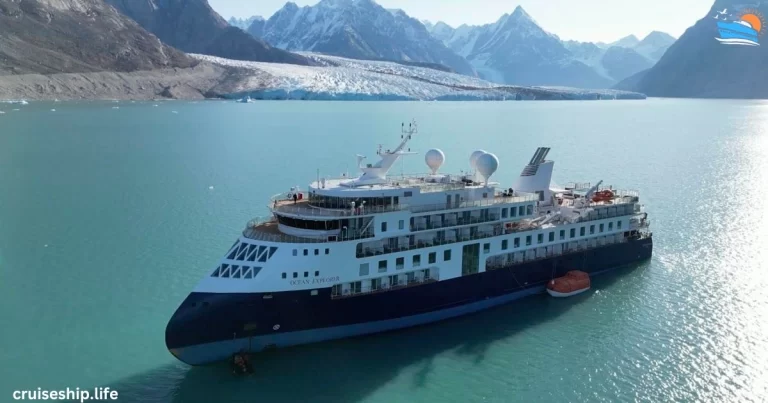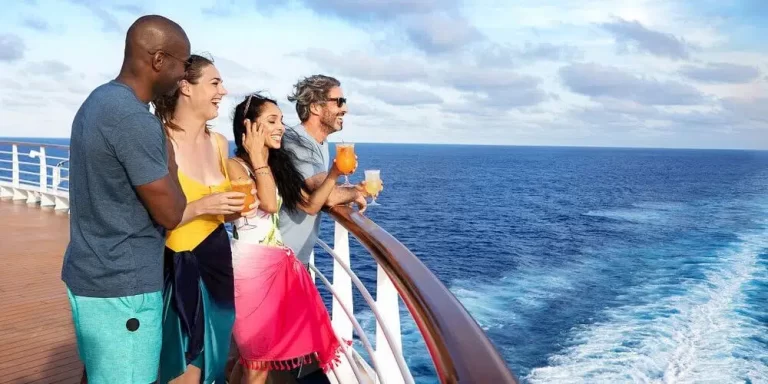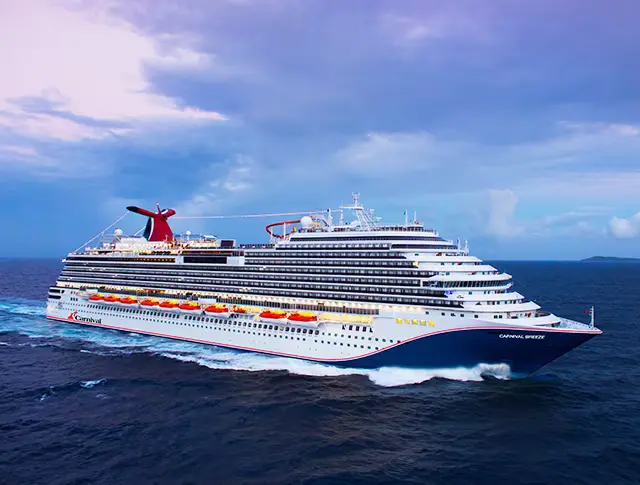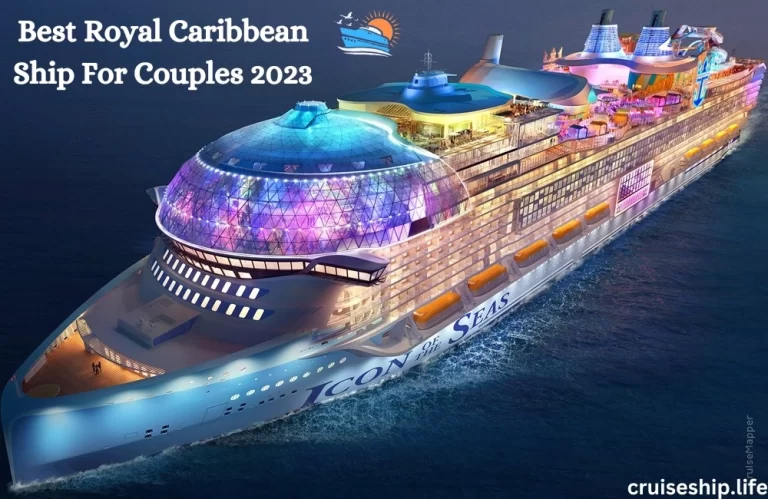What Happens If A Cruise Ship Gets Hit By Rogue Waves?
Fraud waves are huge and can appear out of nowhere. Those new to cruising, or those who hear about unusual waves like this and are concerned, may wonder if unusual waves have ever hit a cruise ship before. If so, what happened? Did it survive or was it overthrown? Rogue Wave looks pretty scary. They are seemingly random giant walls of water. If you’re nervous about cruising, you might be worried to know that there are such big waves.
Please reassure me. Let’s take a look at what a rogue wave is, how common it is, and why we don’t often hear about large-scale disasters caused by rogue waves
At the end of the day, I don’t think you have to fear rogue waves on a cruise trip.
Where Do Rogue Waves Appear?
The causes of rogue waves are currently under research, and official documentation is relatively new, so it’s difficult to say where they occur most often.
In the 21st century, rough seas have been recorded in the Gulf of Mexico, the northern Pacific Ocean, the Mediterranean Sea near Catalonia, and off the coast of Newfoundland, Canada.
Many other rogue radio waves were recorded around the world before they were officially designated.
It seems to occur mainly in places where there is a strong current in the opposite direction of the storm surge. However, this is not consistent in all cases and could have multiple causes.
The MaxWave project, led by a team at the Technical University of Berlin, conducted research showing that unwanted waves are created when a series of fast waves traveling more than twice as fast as the slower waves is overtaken by a slower wave. The waves combine to create even larger waves.
Scientists are getting better at documenting rogue waves, and we’re learning that they’re not as rare as we thought, but they’re still rare.
What Is A Rogue Wave?
Rogue waves, also known as abnormal waves or monster waves, are very large and unexpected ocean waves that deviate significantly from typical wave patterns in a particular region. These waves are characterized by their very high height and can be extremely dangerous for ships and maritime activities.
The main characteristics of illegal radio waves are as follows.
Suddenness: Illegal radio waves occur suddenly and frequently without warning. They occur in relatively calm seas and can spook mariners, cruise ships, and offshore structures.
Height: Rogue waves are usually much higher than surrounding waves. Typical ocean waves are only a few feet high, but they can reach heights of 80 feet or more.
Steepness: These waves have steep, almost vertical walls that make them particularly dangerous. Unlike normal waves that rise slowly, rogue waves can look like steep walls of water.
Rare Event: Rogue waves are relatively rare events, but they occur in oceans around the world. It was once considered mythical because records are rare.
Although the exact causes of rogue waves are not fully understood, they are thought to result from a combination of several factors, including:
Wave Interaction: When multiple wave systems converge, their energy can combine to produce larger waves. This phenomenon is called radio wave interference.
Ocean Currents: Strong ocean currents can destabilize waves and form violent waves.
Wind Patterns: Under certain conditions, unpredictable wind patterns can cause severe waves.
Giant waves pose a significant danger to ships and offshore structures, as their sudden appearance and extreme height can cause devastating damage. Although modern ships are designed to withstand rough seas, they can still be exposed to the immense forces of rough seas.
To reduce the risks associated with rogue waves, oceanographers, meteorologists, and marine experts study these phenomena to better understand their causes and when and where they are likely to occur. Predict. In addition, we use advanced weather forecasting and monitoring systems to provide early warning to ships and offshore facilities, allowing them to initiate evasive action if necessary.
Officially, the highest rogue wave ever recorded was a 58-foot wave off the coast of British Columbia, Canada, in 2020. At this height, it was almost three times as tall as other waves around it.
Much larger waves have been recorded. In fact, the first officially recorded rogue wave occurred off the coast of Norway in 1995 and was 84 feet high. However, it is not considered the largest rogue wave, as the surrounding waves at the time were “only” twice as high.
Although official records have been kept since 1995, i have evidence that many waves in the past reached heights of up to 120 feet.
To be clear, the 58 foot wave was not the biggest wave, there were some even bigger waves. However, this 58-foot wave is officially considered the largest above-average wave in the area.
How Big Are Rogue Waves?
The definition of “rogue wave” refers to the state of the sea, so the officially highest rogue wave is not actually the best wave of all time. Instead, scientists have decided that the title “largest rogue wave” is given to the largest wave compared to other waves nearby.
The highest officially recorded rogue wave was a 58-foot wave off the coast of British Columbia, Canada, in 2020. At this height, it was almost three times as tall as other waves around it. [Source]
Much larger waves have been recorded. In fact, the first officially recorded rogue wave occurred off the coast of Norway in 1995 and was 84 feet high. However, it is not considered the largest rogue wave, as the surrounding waves at the time were “only” twice as high.
To be clear, the 58 foot wave was not the biggest wave, there were some even bigger waves. However, this 58-foot wave is officially considered the largest above-average wave in the area.
Can A Rogue Wave Sink A Ship?
In fact, various incidents have been recorded that rogue waves pose a serious danger to vessels and can damage or even sink them. Although large modern cruise ships are designed to withstand the effects of most small adverse waves, they are not completely immune to these extreme events. Smaller vessels are generally more risky, but may have the advantage of being more maneuverable and able to avoid the direct path of dangerous waves.
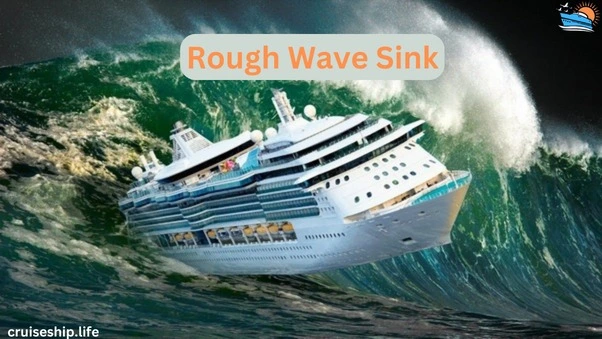
Below are some notable incidents involving ships and large waves, including suspected rogue waves.
R/V Ballena (2000): This her 56-foot research vessel capsized and broke apart on a rocky shore, likely due to rogue waves.
Harta Rimba: A 100-foot passenger ship carrying 332 people sank in rough weather and large waves.
MV Cordigliera: Transport vessel with 29 crew members sunk. Probably due to rough sea conditions.
SS El Faro: This cargo ship sank in hurricane conditions with 33 people on board. This speaks to the extreme danger posed by strong storms at sea.
SS Waratah (1909): The passenger ship SS Waratah disappeared off the coast of Durban, South Africa, and her wreckage was never found. It is believed that the ship may have capsized and sank due to strong waves.
USS Memphis (1916): The U.S. Navy cruiser USS Memphis was destroyed by her three successive waves, likely the effects of a nearby hurricane.
SS Edmund Fitzgerald (1975): This ocean freighter sank in a storm. Although it may not have been an official bad wave, the extreme waves are believed to have contributed to the disaster.
Andrea Gale (1991): The fishing boat Andrea Gale sank in her 1991 “The Perfect Storm” and was the subject of the book and movie “The Perfect Storm” starring George Clooney and Mark Wahlberg.
These incidents highlight the inherent dangers of extreme waves, whether officially classified as illegal waves or due to severe weather conditions. They serve as a reminder of the importance of maritime safety, advanced forecasting, and vessel design to minimize the risks associated with these unpredictable natural phenomena.
What Size Of Waves Can A Cruise Ship Handle?
cruise ships are designed and built to sail in a wide range of ocean conditions and are usually able to handle medium-sized waves without major problems. Here are some things to keep in mind about cruise ships and waves:
General Wave Resistance: Cruise ships can comfortably navigate waves in the 10-15 foot range without major problems. These conditions are well within design parameters.
Damage from Larger Waves: Waves up to 50 feet in height are unlikely to sink a cruise ship, but they can cause damage. These large waves are considered significant and can cause structural damage and affect onboard facilities and comfort.
Wave size perception: It is important to note that wave size perception can vary greatly depending on the viewing angle. While 15-foot waves may not seem small on shore, they are often manageable on large cruise ships.
Seasickness: In rough seas with waves greater than 15 feet, passengers prone to seasickness may experience discomfort. If you are prone to seasickness, we recommend using motion sickness medication and spending time on the lower deck where there is less movement.
Dealing with Rogue Waves: In the unlikely event of encountering rogue waves, Cruise Officers are experienced seafarers and are trained to respond effectively. Safety protocols are in place to protect passengers and minimize harm. In these situations, passengers may be instructed to stay indoors and away from windows.
Supertanker Comparison: Huge bad waves are known to disable or destroy supertankers, but cruise ships are less likely to go into extremely rough seas and are more likely to survive the biggest bad waves. The risks encountered are significantly reduced.
Overall, cruise ships are designed for safety and stability, and have experienced crews capable of handling a wide range of sea conditions. Although large waves can be challenging, cruise lines prioritize the safety of their passengers and have procedures in place to reduce the risks associated with extreme weather events, including out-of-control waves.
Rough waves vs. tsunami vs. storm surge
Sometimes rogue waves are confused with tsunamis or tidal waves, but that’s only in name. All three are very different.
Let’s start with tsunamis have sometimes been called tidal waves in the past, but this is incorrect. Tsunamis are characteristic one-off waves caused by large changes in water that cause plates to move, usually as a result of subsurface earthquakes.
Tidal waves. This is actually the scientific name for waves caused by the tides caused by the moon’s gravity. Therefore, they are completely predictable as you can know when the moon is in different phases.
This huge wave of displaced water will then come crashing down in a great movement. At sea, the water level just rises, and large waves are not generated one by one, so it is not very noticeable. Therefore, tsunamis are rarely a problem for ships at sea.
The problem is that huge waves continue into coastal areas, forming huge walls of water that break at the shore.
Rogue waves are one-off, unpredictable waves whose exact cause is not yet known, but we do know that they are not related to land movement or normal gravity. As single waves, they pose a much greater threat to ships at sea.
Can A Wave Flip A Cruise Ship?
It is very unlikely that a wave will capsize a cruise ship. It is built wide and has heavy ballast on the lower deck to withstand strong waves. A complete sideways collision of the ship may also be due to the negligence of the crew.
The only way to turn a cruise ship is to catch the wave impact vertically along the beam on the port or starboard side. In most cases, ships aim to hit the bow of the wave first.
And the thing about rogue waves is that they’re unpredictable and can occur suddenly, but they’re hard to miss. A navigator’s job is to look for and respond to dangers such as strong waves.
In most cases, you won’t be surprised by a huge wave suddenly rushing towards your boat. However, there are times when a wave of fraud hits you suddenly and you have little time to react.
Modern cruise ships also have amazingly sophisticated control and propulsion methods that allow them to make quick turns. As long as the entire crew does not fall asleep or abandon their posts, dangerous waves can usually be dealt with, giving the ship time to take them in as safely as possible.
That doesn’t mean heavy waves won’t affect cruise ships at all. Damage may occur depending on the height of the waves. However, the plane did not fall and the passengers were mostly safe.
What Size Of Waves Can A Cruise Ship Handle?
Cruise ships are typically designed to handle most waves in the ocean and can typically navigate 10-15 foot waves without issue. Waves up to 50 feet usually won’t sink your boat, but they can cause damage.
Waves up to 15 feet high may not sound like much compared to some of the other dangerous waves mentioned in this article, but if you’re standing on the shore and a 15-foot wave is heading toward you… Imagine coming. It doesn’t look that small anymore, does it?
However, as long as you don’t get seasick, you’ll probably be perfectly fine on a cruise ship. For 15-foot waves, you need to use all the techniques available to you to manage your conditions. This includes spending time on the lower deck.
Bad waves may be even higher, resulting in damage to the cruise ship. Guests are asked to stay indoors and away from windows.
If a huge wave occurs on a cruise ship, it can be a very serious accident.
Cruise ship crews are experienced sailors who know what to do in the event of uncontrollable waves. These ensure passenger safety and prevent maximum damage to the ship.
While there have been giant supertankers crippled and destroyed by the biggest waves in the past, cruise ships enter stormy waters much less frequently, so the risk is significantly reduced.
Has A Cruise Ship Ever Hit A Rogue Wave?
Cruise ships have been hit by heavy waves in the past, and this is not unusual. Since official rogue wave records began in 1995, six cruise ships have encountered rogue waves. Everyone sustained damage, injuries were reported, and sadly one passenger died on the Viking Polaris in December 2022.
The most recent incident of a cruise ship being hit by rough seas occurred on the Viking Polaris in December 2022. A woman was killed and four other passengers were injured when a U.S. Antarctic cruise ship bound for Ushuaia was hit by rough seas.
Viking Polaris
During a storm, waves broke the cabin window and a 62-year-old passenger was unfortunately killed by broken glass. The other injured passengers did not have life-threatening injuries.
Three other rogue wave incidents also occurred in the South Atlantic, also affecting small cruise ships. Caledonian Star and MS Bremen both had rough waters in her 2001. These were huge waves about 100 feet high.
Bridge windows were broken on both ships, and power and navigation control equipment were lost. However, Bremen’s crews were able to restore engine power, and neither ship reported any serious injuries. The Caledonian Star had to be dragged back to port for repairs. These were serious accidents, but fortunately there were no injuries to the ship.
Her third incident in the South Atlantic occurred in March 2007 when MS Plissendam was struck by a 40-foot wave her second time in a row. The accident occurred near Cape Horn, and approximately 40 passengers were injured.
Of the large cruise ships, Cunard’s Queen Elizabeth 2 was hit by 90-foot-high waves caused by Hurricane Louis in 1995. Her damage was minimal. There were several injuries on board, but none were serious.
- QE2
- QE2
In another case, NCL’s Norwegian Dawn was hit by three extreme waves off the coast of Georgia in 2005, one of which was approximately 70 feet high.
It reached the ship’s 10th deck, breaking two windows (caused by a damaged balcony railing) and flooding more than 60 cabins and some public areas. Although there were several injuries, the ship was able to enter port for repairs without further problems.
Note that this is the first time official records of rogue waves began. It is generally accepted that the Queen Mary was struck by rough seas in 1942, sustaining extensive damage and running aground.
Can A Cruise Ship Survive A Rogue Wave?
Cruise ships are usually able to survive even when hit by dangerous waves. All modern cases where cruise ships encountered heavy waves resulted in damage, but the ships did not sink.
Passenger safety is always a top priority for cruise lines. For this reason, only experienced crew members are employed who know exactly what to do in any situation, even in rare situations such as rough seas.
The fact that cruise ships are so large and so well built means that rough seas are difficult to capsize against their ballast, and they also do not break up even when threatened by most rough seas. It means it’s sturdy enough that it doesn’t.
A sufficiently large rogue wave can cause this. There are no guarantees, but if you capsize due to rough waves, you will be in big trouble.
Also, some rogue waves are so powerful that they can cause enough damage to sink a ship, but this is also very rare.
When we first published this guide, we received a letter from Captain Michael Lloyd, RD**, MNM, CMMar, FNI, YB, RNR to add more information and we have updated the guide accordingly. . He has spent over 50 years at sea and has been in command of various ships for 35 years, so his knowledge is invaluable.
Captain Lloyd said cruise ships, especially some of the larger ones, are at greater risk because of their size, especially since they are generally built for fair weather and designed to avoid rough weather. Stated. Also, it’s not always easy to avoid the weather, as heavy waves can occur quickly.
How Many Ships Are Lost To Rogue Waves?
Most of the ships exposed to the dangerous waves survived with minimal damage. There have been some incidents where ships have been lost due to dangerous waves, but these are extremely rare on cruise ships.
Small ships are more likely to be lost in dangerous waves, but even “normal” rough seas can sink small ships and boats, so exactly how many are lost in strong waves? It is difficult to give exact figures on that.
Has a Rogue Wave hit a Cruise Ship?
Some cases were recorded when heavy waves struck passengers on a cruise ship or ocean liner (QE2). There were no reported casualties, and all five ships survived and were able to sail for many years afterward.
MV Explorer
On January 26, 2005, as part of the Semester at Sea program, the cruise ship MV Explorer was hit by a 50-foot swell that broke the bridge windows, shorted out the navigation system, and caused two engines to fail.
This medium-sized cruise ship had approximately 700 students on board at the time.
Queen Elizabeth 2
In September 1995, the Cunard ocean liner Queen Elizabeth 2 (QE2) encountered huge, rough waves estimated at 92 to 96 feet in height while crossing the North Atlantic. Although the QE2 is not a cruise ship, it has been designed to be even more robust to withstand the harshest waters of a transatlantic voyage.
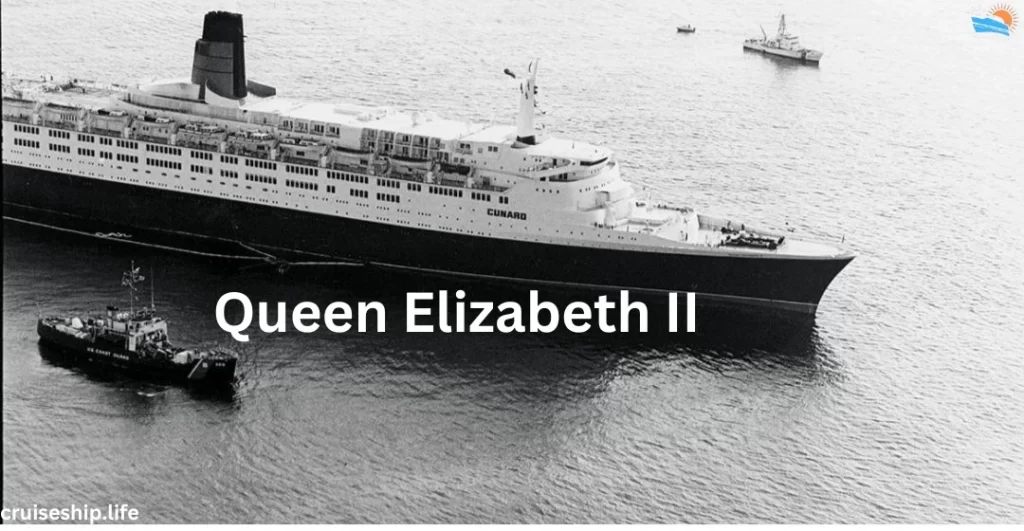
Early in the morning, rough seas struck a ship with about 3,000 passengers on board, about 300 miles off the coast of Newfoundland. In consideration of the hurricane situation, the captain had advised all passengers to remain in their quarters, as many passengers were likely in bed at the time of the accident.
The ship withstood the brunt of a huge wave over her bow, followed by two more large waves. Astonishingly, no injuries were reported among the passengers or crew.
To provide a visual reference to the encounter, someone claiming to be the “Chief Cashier on that Voyage” made a vivid comparison: “If you saw the film The Perfect Storm and the scene with the fishing boat climbing up this enormous wave, then that was us.”
The incident serves as a testament to the strength and resilience of ocean liners like QE2, which are constructed to navigate through some of the most challenging and unpredictable ocean conditions, even when facing extraordinary events like rogue waves.
MS Bremen (2001):
MS Bremen is a German cruise ship owned by the shipping company Hapag-Lloyd Cruises. She was built in 1990 and primarily serves the luxury expedition cruise market.
In 2001, during a voyage to Antarctica, the MS Bremen encountered rough seas with an estimated height of approximately 98 feet. A wave crashed against her bow, damaging the bridge. The accident injured 4,444 crew members and passengers were in their cabins due to extreme weather.
Despite the damage, the ship was able to continue sailing and no injuries to passengers were reported.
RMS Queen Mary 2 (2005):
Her RMS Queen Mary 2, also known as QM2, is one of the world’s most famous ocean liners. She was built in 2003 as the flagship of the Cunard line.
In 2005, Queen Mary 2 was caught in a severe storm in the North Atlantic during a transatlantic voyage from New York to Southampton.
She This ship was designed to withstand rough seas, but she sustained some damage during storms. Passengers reported that the ship was listing heavily, which was a cause for concern.
The ship survived the storm and no injuries were reported to passengers or crew.
MSC Seaside (2021):
MSC Seaside
is the newest cruise ship from shipping company MSC Cruises. It was built in 2017 and is known for its innovative design.
In July 2021, MSC Seaside encountered Gargoyle, an overwater tornado, off the coast of Italy.
Although it was not a rogue wave, the incident caused anxiety among passengers who witnessed gargoyles coming out of the ship.
The ship’s crew and master took appropriate measures to ensure the safety of passengers and no injuries were reported. MSC Seaside continued its journey without incident.
Holland America’s MS Prinsendam
In 2007, the Holland America cruise ship MS Prinsendam (now known as MS Amera) encountered rough seas estimated to be approximately 39 feet high. The incident occurred near Cape Horn in Chile, which is known for its harsh ocean conditions. At that time, the MS Prinsendam had a passenger capacity of 835 people.
As a result of this unexpected encounter with violent waves, approximately 40 people on board were injured, some of whom had to be hospitalized for treatment. The force and impact of the waves caused various injuries to passengers and crew.
The crew of the MS Prinsendam acted quickly to provide medical aid to the injured passengers and ensure their safety. Cruise ships are equipped with medical equipment and trained medical personnel to respond to this type of emergency.
This incident was undoubtedly a harrowing experience for the crew, but it is a reminder of the unpredictability of the sea, especially in areas with difficult weather conditions. Cruise lines take passenger safety seriously and have safety protocols in place to reduce risks associated with inclement weather and unexpected events at sea.
MS Bremen and MS Caledonian Star
In 2001, two Bahamian-flagged cruise ships, MS Bremen and MS Caledonian Star, had a tragic encounter with huge waves while sailing in the South Atlantic. This accident is a remarkable testament to the resilience of these ships and their crews in the face of extreme sea conditions.
The large waves that struck both ships were estimated to be 98 feet high, posing a major threat to safety and navigation. The force of the waves caused severe damage to both ships, including breaking the bridge windows and destroying major navigation and communications equipment.
Despite significant damage caused by the encounter with rough seas, the crews of MS Bremen and her MS Caledonian Star showed remarkable professionalism and calmness in dealing with this crisis. Ta. After the wave hit, MS Bremen surfaced for about two hours, but its propulsion systems were not activated.
MS Caledonian Her star was in a similar predicament and she had to be assisted by the Argentine Navy upon her arrival in the Argentine port of Ushuaia. Due to her compromised capabilities, tug assistance was required to ensure the ship’s safe arrival and docking.
Amazingly, MS Bremen and her MS Caledonian Star both underwent extensive repairs and were able to resume their voyages. These ships proved durable and served as ocean-going ships for many years afterwards. It is noteworthy that the MS Bremen continues to operate despite the challenges it has faced, reflecting the longevity and technological advances of modern cruise ships in the face of the enormous forces of nature at sea.
Viking Polaris(2022)
In December 2022, an expedition cruise ship sailing on the Antarctic was hit by a rogue wave. Windows were smashed on deck 2 on the port side of the ship.
A 62-year-old passenger has died after sustaining injuries from the broken glass. 4 other passengers were treated for injuries sustained from the accident.
One of the passengers reported how the rogue wave hits the cruise ship and that it took the brunt of the wave without it rocking the ship back and forth. She was surprised at how stable it remained.
What Would Happen if a Rogue Wave Hit a Large Cruise Ship?
Many people are wondering what would happen if a cruise ship was hit by one of the biggest waves in history.
There are lots of videos on the internet of big waves hitting cruise ships, but they’re just big waves, and it’s nothing like being hit by real rough waves.
Although there is no visual evidence of rough seas hitting a cruise ship, it is possible that this scenario could be brought to the big screen using huge modern cruise ships such as those built by Wonder of the Seas and Symphony of the Royal Caribbean. It was reproduced in Ocean.
FAQ,s
A rogue wave is an exceptionally large ocean wave that appears suddenly without warning. It differs from regular waves in that it can be significantly larger and more dangerous.
While it’s theoretically possible for a rogue wave to capsize or sink a cruise ship due to its immense size, the likelihood of this happening is extremely low.
Rogue waves have been reported to reach heights of over 100 feet, with the largest officially recorded wave estimated at around 96 feet.
The exact causes of rogue waves are not fully understood, but they are believed to result from a combination of factors, including the merging of different ocean swells and strong winds over a long fetch of water.
Yes, there have been recorded instances of rogue waves hitting cruise ships, resulting in varying degrees of damage but no reported casualties.
Cruise ships are designed to handle large waves, and their experienced crews can take measures to avoid areas where rogue waves are more likely to occur.
Passengers are generally safest inside their staterooms, minimizing the risk of injury from falling objects or being thrown around. They should also follow instructions from the ship’s crew.
The chances of a cruise ship encountering a rogue wave are extremely low due to their rarity, and improved weather forecasting helps ships avoid such situations.
Yes, modern cruise ships are designed to handle waves of up to 50 feet without significant issues, ensuring passenger safety and comfort even in rough seas.
Smaller ships are indeed more vulnerable to rogue waves, but their maneuverability can sometimes help them navigate away from the wave’s path.
End Line
Although rough seas remain a rare and impressive natural phenomenon, modern cruise ships are equipped to handle a wide range of sea conditions, making them much less likely to encounter them. Your safety is our top priority on cruise ships, and Enjoy a leisurely cruise while admiring the breathtaking views of the open ocean.Stay Blessed



